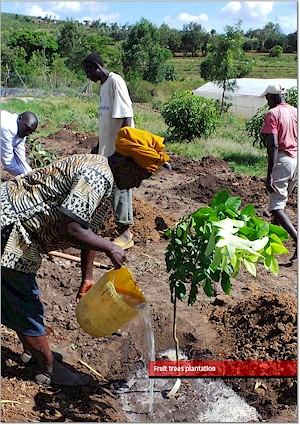| Book Chapter |
 |
|
| Title | Agroforestry options, issues and progress in pantropical contexts | | Author | Meine van Noordwijk, Robert J. Zomer, Jianchu Xu, Jules Bayala, Sonya Dewi, Andrew Miccolis, Jonathan P. Cornelius, Valentina Robiglio, Devashree Nayak and Javed Rizvi | | Editors | Meine van Noordwijk | | Year | 2019 | | Book Title | Sustainable development through trees on farms: agroforestry in its fifth decade | | Pages | 111-136 | | Call Number | BC00470-19 |
|
| Abstract: |
There are many ways to classify and describe agroforestry practices based on the spatial and temporal arrangement of trees, the type of trees in relation to economic value, the non-tree components (crops, livestock, fish) or the balance between retained, spontaneous and planted trees (compare with Chapter 2). The simplest way that is compatible with existing global data sets may well be the classification of tree canopy cover on agricultural land because it allows a direct comparison across regions and countries. In this chapter, we present data, experience and lessons from the six regions in which World Agroforestry is currently active. Together, they cover 66.8% of global agricultural land and 72.9% and 78.8% of such land with at least 10% and 30% tree cover, respectively. Across all regions, tree cover on agricultural land is positively related to rainfall (scaled by potential evapotranspiration in Figure 6.1).
Central America stands out as the region with the highest, relative, on-farm tree cover in any climatic zone, with relatively small differences between other regions, once climate is accounted for. From existing data, it appears that increases in soil carbon storage in agroforestry systems relative to open-field cropping (on average 19% for the 0–100 cm depth layer) are only partially related to aboveground carbon storage in trees across four different agroforestry practices (homegardens, alley cropping, windbreaks, silvopastoral systems), but do correlate with tree age. |
|